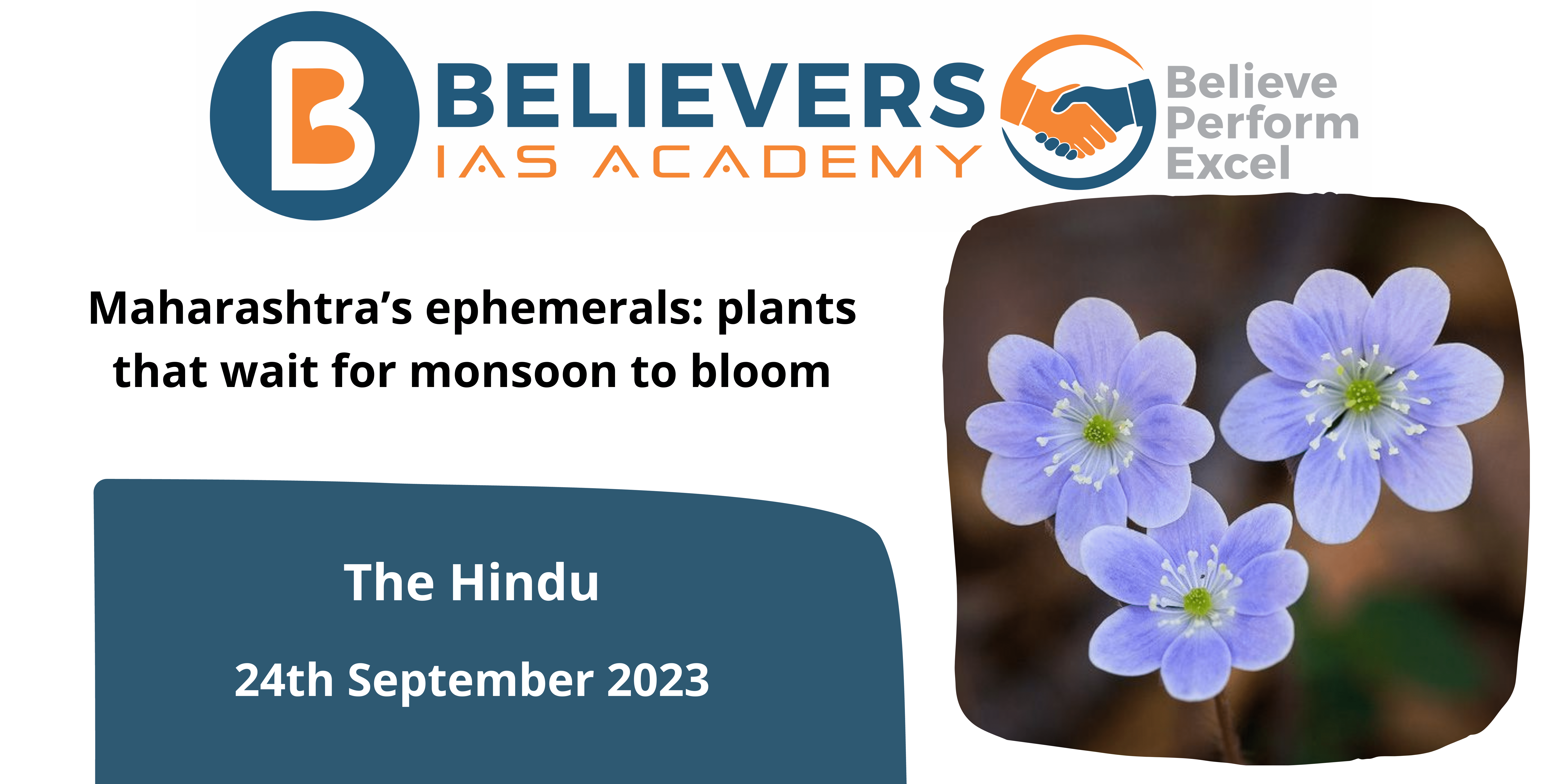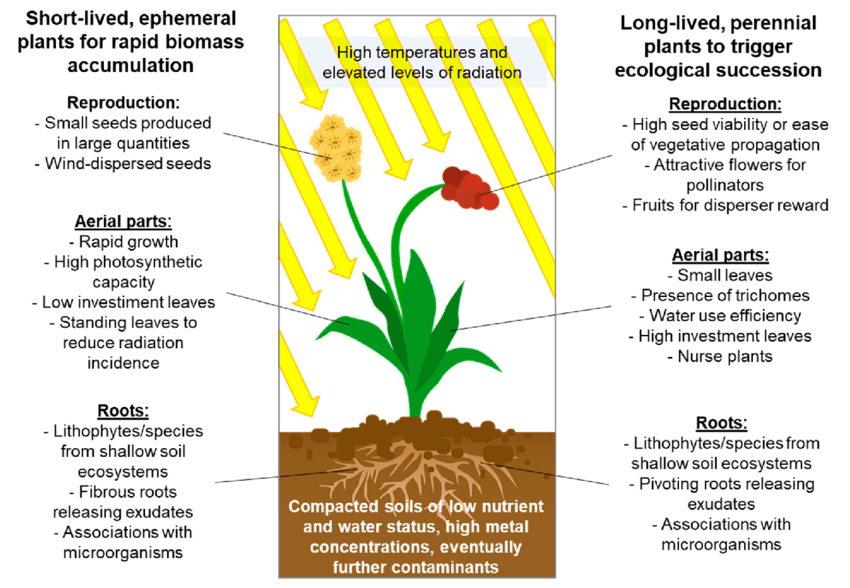Maharashtra’s ephemerals: plants that wait for monsoon to bloom
Context
The springtime is frequently linked to blooming. Few individuals are aware, however, that in some regions of Maharashtra, some plant species wait all year to bloom only during the monsoon because they enjoy the rain.
What are ephemerals?
- Ephemerals are short-lived plants that have one or more generations each year, according to botany. They only develop during favourable times, such as when there is enough rain, and survive adverse times as seeds.
- Ephemerals consist of:
- Spring ephemerals: Quickly emerging perennial plants have a brief growth and reproduction phase before reverting to their underground portions in the fall. To take advantage of the available sunlight, these plants flower before deciduous trees begin to leaf out.
- Desert Ephemerals: Desert-dwelling plants only occasionally receive enough moisture for growth and flowering throughout the year. Ephemeral plants found in the desert include milkweed and poppies.
- By the middle of the summer, ephemerals may be gone. Some survive as underground root networks, while others are truly ephemerals, with only seeds remaining until next spring.
What are the characteristics of the ephemerals that are found in Maharashtra?
- Types of Monsoon Ephemerals: Annual and perennial ephemerals are the two different forms of monsoon ephemerals. Annual ephemerals have a brief lifespan and are grown from seeds every year, but perennials have underground support systems like tubers or bulbs that enable them to endure.
- Blooming Period: The end of May marks the beginning of the monsoon ephemerals’ blooming season, which lasts through June, July, August, and September. Some plants develop leaves before they blossom.
- Species Diversity: The monsoon season brings forth a variety of flowering plants, including ground orchids, lilies, wild yam, Indian squill, and others. These plants serve as important sources of nectar and pollen for native pollinators.
What are the challenges faced by environmentalists to conserve these species?
- Loss of Habitat: The loss of habitat brought on by urbanization, agriculture, and infrastructure development is one of the biggest dangers to these species. The native habitats of these plants are being destroyed as cities grow and agricultural land is turned into housing and other human uses.
- Land Use Changes: Changes in land use, such as deforestation and the conversion of natural landscapes into urban or suburban areas, can harm the ecosystems that support these plants. There may be a loss of suitable habitats as a result of this change in land use.
- Climate Change: The timing and patterns of the monsoon rains can be impacted by climate change. The flowering and reproductive cycles of these plants can be disturbed if the monsoon season becomes unexpected or fluctuates in strength, which will make it more difficult for them to survive.
- Invasive Species: A fall in the populations of native species can result from invasive plant species outcompeting native monsoon ephemerals for resources. The content and organization of nearby ecosystems may change as a result of these invasive species.
- Overharvesting: Some people might gather these plants for a variety of uses, such as ornamentation or folk medicine. These species’ populations may become depleted and in danger of extinction due to overharvesting.
- Lack of Knowledge: Conservation efforts may be hampered by a lack of knowledge about the significance of these plants and their place in the ecosystem. Gaining support for their protection requires public outreach and education.
How can we conserve these plants?
- Protecting and restoring habitat: Establish protected areas, reserves, or conservation easements to identify and save important habitats. Plant native plants, eradicate invasive species, and enhance soil and water quality to restore degraded environments.
- Observation and Research: To learn more about the ecology, range, and behaviour of these plants, conduct scientific research. Populations should be watched to gauge their health and monitor changes over time.
- Education and Information: Educate the public on the value of monsoon ephemeral plants to regional ecosystems. Conduct outreach initiatives and educational programs to include communities and advance conservation.
Conclusion
Overall, the article underscores the importance of these monsoon ephemerals in maintaining local ecosystems and the need for conservation efforts to protect them in the face of environmental changes and habitat destruction. It also highlights how such experiences can inspire individuals to develop a deeper appreciation for the natural world.





